CRN Exclusive: HP CEO Weisler On The Everything As A Service Channel Shift, A3 Printer Offensive, The Sprocket 'Surprise' And The Possibility Of A Security Acquisition

Leading The Everything as a Service Revolution
HP CEO Dion Weisler says the company's big bet on everything as a service, including a growing device as a service sales pipeline, is starting to pay off.
"It is our fastest growing pipeline," Weisler told CRN in an interview at HP's Executive Forum 2017 at the Boca Raton Resort & Club this week. "If you go onto our CRM system and you look up the funnel by segment – as a service of all flavors is the fastest growing pipeline we have. In print services now, partner-led managed print services is our fastest growing portfolio. That is extending itself to PCs as well. The data is there. The momentum is there. The funnel is there."
Over the last year, HP increased the percentage of total sales going through its partners from 80 percent to 87 percent of its $48.2 billion in annual sales. "We have moved more than $3.3 billion from a direct motion to the channel," said Weisler. "We are not a channel-first company. We are a channel-led company."
HP is investing $1 billion per year in channel incentives, enablement and training. "The more you invest in us, the more we will invest in you," Weisler told several hundred top partners at the Executive Forum.
Weisler spoke with CRN about HP's channel charge, including the everything as a service channel shift, the A3 printer copier replacement offensive, the wildly successful Sprocket Printer and the possibility of a security acquisition.

What is the HP Device as a Service offering, which is picking up momentum in the channel?
This journey started for us about a decade ago when we first put our toe in the water with managed print services. The value proposition back then was, you would quite simply walk into a customer and say: 'How would you like to take 30 percent of your costs out? Move from transactional to contractual and we'll go through and audit your whole office. You don't want to really sit there and manage print, let us do that for you.'
And over the course of the last 10 years we have built an incredible amount of experience, intellectual property, procedures, processes, people that know how to deliver a managed print contract. And it just kind of dawned upon us that with people trying to move to new active environments, move to the cloud and update their ERP systems, personal systems are really important to them but managing them is not really important to them. So why can't we extend all the learning that we had in managed print services, all those tools, all that know-how and just apply it to everything as a service because our customers were telling us they wanted to do this.

How big a change is Device as a Service from the e-auction purchasing trend from some time ago?
Every year going into a reverse e-auction was quite trendy in the late 90's and 2000's but it actually doesn't work because there is no real ownership. You go in, you jump in, you get out and no one really owns the outcome. You get into a service contract. You are bound with that customer. You are part of their solution. That is what is really important for us.
We took all the learning and applied it to PC as a service, workstations as a service, thin clients as a service, retail point of sale as a service, obviously printing as a service and in the future we'll do 3-D printing as a service. So everything is going to move to as-a-services. It is the direction of the future.

What is the customer momentum behind Device as a Service and Everything as a Service?
It is our fastest growing pipeline. If you go onto our CRM system and you look up the funnel by segment, as-a-service of all flavors is the fastest growing pipeline we have. In print services now, partner-led managed print services is our fastest growing portfolio. That is extending itself to PCs as well. The data is there. The momentum is there. The funnel is there. We are converting customers already now.
And our partner ecosystem recognizes that they have built a lot of capabilities as well. Just like our security layer, they can layer on [their own] service[s]. They get a much stickier relationship with the customer. They are able to help solve problems as a strategic partner to the customer and they keep coming back to the customer. And that gives them a line-of-business conversion capability. So if they were delivering managed print service[s] today they can walk in and say, 'How would you like us to add PC as a service, how would you like us to add Workstation as a service?' and vice versa.
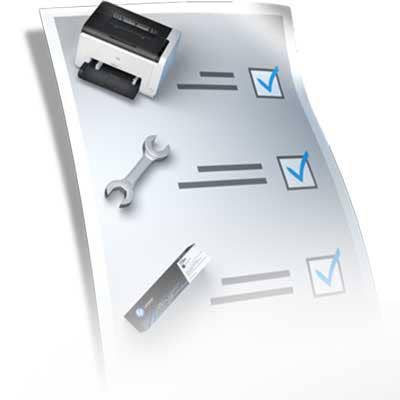
How big a competitive advantage is Everything as a Service versus the competition?
We have certainly cracked the code on managed print services. We went from a business that was embryonic to [being] a market leader now in managed print services. Having all that infrastructure puts us in a pretty unique position among the PC players because they haven't been doing it. So we have a decade head start on the know how.
Lord knows we didn't do a great job with the first iteration that we went out with 10 years ago with managed print services. There was a lot of learning along the way. We made a lot of mistakes. We took ownership of that and we fixed it and we got better and iterated. But it is not an easy thing to do. It sounds easy but it is quite difficult. And so that, I think, is the competitive advantage, that we have the core and we are now just building on it. Frankly I don't think there is another partner out there that can deliver both print and PC the way we can.

What are the cost advantages you are seeing in the managed print services business?
There is a massive cost improvement. If you have a traditional transactional customer today, the basic rule of thumb is you'll save 30 percent on cost. No doubt. That is a real combination of things. I think what you layer on top of that is the fact that customers don't want to have to think about managing a complex print fleet, particularly in a world that is as vulnerable from a security perspective as the world is today. All of these printers have a blue cable plugged into them. They are the Trojan horse on the network. There is often a whole fleet of all sorts of different types of printers from different vendors.
We can actually go in and do a complete security audit. What dollar do you put on the price of a major hack into your corporation and your customer's data? That stuff is priceless. There are the raw transactional savings costs. There is the peace of mind. There is the fact that you can now redeploy your precious IT resources to other more strategic matters. So how do you calculate the full ROI [return on investment]? The 30 percent cost savings is easy. The other stuff is a little more difficult to measure.

Are partners moving fast enough to capture the as a service market opportunity with HP?
I think right now the message is getting across around everything as a service. We have been talking about it for a while. We have been creating that message. We have been creating that capability with tool kits for our partners to help them sell everything as a service. I would say that we are only just scratching the surface on what I think is an incredibly powerful and compelling tool for our resellers and our ultimate customers. I think that is one of the areas that our partners could jump on even faster.
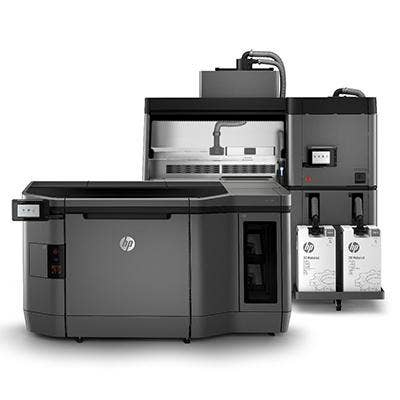
How about the 3-D printing market opportunity and how fast partners are moving there?
3-D printing is a little further out but folks should start to understand that market and start to think about how they are going to participate. This is not super-urgent for our partners today because this industry will take a little longer to mature. There are some real voids in capability because it is such a small industry today. I think any organization that is looking to invest in the future should look at 3-D printing.
I have spoken to a number of [solution provider] CEOs over the last couple of days who are thinking: 'How am I going to participate in three years time? What do I need to build right now? What capability do I want to bring to this industry?' That is the where the smart money is going.

What is the SMB and vertical push that HP is making with partners?
SMB is sort of a horizontal. There is an incredible portfolio of products that we can go to market with our network of 250,000 partners. We can go service SMB better than we are doing today. I think that is an under-served population that I would hope that our channel really doubles down on - understanding the real value there.
As far as the verticals go this is where partners can really contribute. Many of them have developed solutions in the verticals we have mentioned. Taking what we have developed as the base platform and adding on what they have in their particular verticals is incredibly powerful. When you walk into a hospital and say, 'Let me transform the way your hospital works.' Or you walk into an insurance company and say, 'Let me transform it and provide end-to-end solutions,' that is really powerful. I think it is a great opportunity for our partner network and for us.
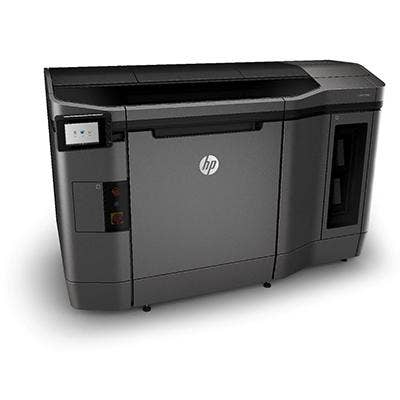
How does it feel now that you are set to start shipping the A3 printers?
It is great to have the products already on the boat. They are on the way over. I saw a note this morning from our team in Europe and the product has arrived at one of our very first customers. This wasn't a little itty-bitty order. This was almost 1,000 units. We are off to the races here. It is amazing that we have not been in this business sooner. I think it demonstrates the power of separation (from Hewlett Packard Enterprise). We are able to now focus. All day and every day we wake up and we think about printing and personal systems. We are doing it organically and inorganically.
So the portfolio is incredibly rich. We have some very unique differentiation from the PageWide side of the business. And we have some very differentiated solutions on the laser side of the business, first with the OEM arrangement that we have with Samsung and then with the completion of the acquisition, which is on track for the end of this year. We are all fired up.
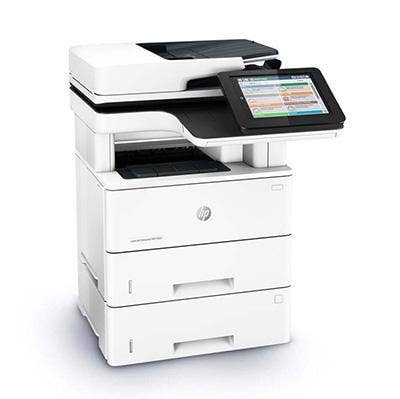
What is the partner plan around the A3 printer copier replacement?
We have got some of our existing partners that were doing A4 business with us and they are now going to take on the A3 portfolio. We have recruited new partners into the network and this is before we do the (Samsung) acquisition. We have got 500 partners already that are out there quoting the A3 portfolio. They are now participating in a $55 billion business that some of them weren't doing before. And guess what it is also doing? It is also opening up new A4 opportunities. We were excluded from these A3 accounts that were buying A4 from the vendors they chose as their A3 vendor. So as we get into A3 it is also opening up A4 opportunities.

What is the biggest hurdle that could possibly hold back A3 sales?
I think we are more ready for this launch than we have been for any product launch in our history. We have spent the past year doing a couple of things and doing them very differently. Traditionally what HP has done is we have built a great product and we have relied on the momentum of the 250,000 channel partners to just kind of take what we invent and push it through the channel to their customers.
With A3 it was going to operate differently because this business operates differently. So we had to spend as much time developing the go-to-market strategy as we did developing the product. How do our partners make money? What is their value proposition? This is about walking into a customer and saying, 'We can reduce the cost of your printing, we can reduce the cost of your service.' And, by-the-way, at the same time partners are going to have a better economic outcome with HP than they have with any of their other A3 partners. That is resonating with them. That is why they are signing up. I think they are moving at a really good clip.

Did the success of the Sprocket photo printer surprise you?
It did. It was a good surprise. Look, the genesis of the Sprocket was again grounded in the megatrends in the strategy. We said we were going to appeal to millennials and we had a whole generation that wasn't printing the same way our generation printed when we were growing up. So how were we going to become more relevant to that population? What is this generation doing? They have enormous numbers of photos trapped in their phone but people like to hold hard memories. They just naturally do.
I think what Sprocket did was unlock the imaginations of, in many cases, millennials that had never printed before. And they are printing now. And that gives us the capability to create a new category. I think Sprocket is just the first in a category that we will continue to explore. We were a little shocked with the response to the point where we sold out so quickly before Christmas and we have been struggling to keep up ever since. What we thought maybe was just a Christmas fad isn't proving to be the case. The demand pool across the globe is really strong. As we build on the category we are going to unlock new and exciting opportunities.

Talk about the 46 percent market share HP has already taken in that Sprocket market segment.
I think that is [the] power of our brand. You take a category, and we weren't the absolute first in this area, but you stick that HP logo on something and it makes a difference. People trust this brand. It has been around for 77 years. They know they can depend on us. I think we enriched it with an incredibly powerful application. It is not just about the device. It is about that whole experience. How do you go from taking a photo to marking it up, making it a bit fun and funny and then printing it out and having it in your pocket. And then you pair that with our brand that is why you can go from zero to half the market very, very quickly.
That is why I believe the A3 copier market is such an opportunity – less than four percent market share. We often have 50-60 percent market share. If we only take 10 points, it is $5.5 billion out there for the channel to go get.

How is the A3 sales pipeline?
Our pipeline is really strong and healthy. We have been reviewing it for the last six months. Partners have been quoting this product line for quite a long time already. It is not like we are starting on April 1 and let's get some runs on the board sometime in the back end of the year. Stuff is already on the boat and it is arriving.
The pipeline is bigger than we anticipated. That is a good problem. Now we are working on supply matching.
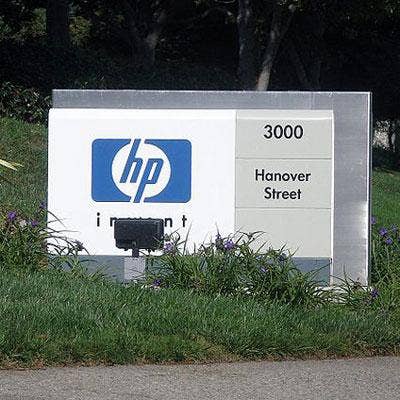
How big a commitment is HP making on security in both devices and printers?
What gives me most comfort here is the way we went about formulating our strategy. We started with, what are the big megatrends? Not the things that are going to happen in the world over the next one or two years, but what is going to happen over the next 10, 20 or 30 years. From those megatrends we defined our strategy. And out of those megatrends and out of our strategy it was very clear to us when we developed the strategy that security was going to become incredibly important.
This goes back to as far as when we were part of Hewlett-Packard Corp when we first started talking about this. It was almost three years ago. At that time we were building the intellectual property of security. We were putting it on our personal systems and we were putting it on our printers. This isn't something we just kind of woke up yesterday and said 'Security is the new buzzword - lets go package and market something up.' Actually, what we did was build product. We have only just now figured out how to tell the story.

What is the HP security story?
It's a very powerful story. The point at the edge of the spear is The Wolf [marketing campaign with Christian Slater], but it is really predicated on layers below the operating system – and there is an operating system in the printer and there is an operating system in the PC – there is at the operating system level and then there is above the operating system level. There is not just one thing in each layer. There are multiple things in each layer. And you put all those things together and you end up with the most secure printers and PCs on the planet. It is a big claim and it is backed by real proof-points and you can see here that it really gives the partners something to differentiate themselves.

When you look at the acquisition strategy, is security going to be part of that going forward?
I have always said that acquisition will be a big part of our future. Our capital allocation policy has always been clear: We said that it would be 50 to 75 percent return to shareholders in the form of dividends and share repurchases, but the remainder will be left for acquisition.
And the acquisitions should not surprise anybody. They will live somewhere on the strategy page and security is a part of strategy. So is it possible? Of course it is possible. Are we likely to go off and do something that doesn't live on the strategy page? Very unlikely. No one was surprised by the Samsung acquisition. It lived on the strategy page. We are not out to surprise anyone.
If you are a partner of ours you know where we are going. The road is very clearly defined. We would love you to join us on the highway and we think we are innovating faster and more progressively than anyone else on the planet. Security is a big part of it.

What is the potential impact of a border adjustment tax on HP and how you and the company are getting involved in that potential legislative battle?
There is a blueprint from [House Ways and Means Committee Chairman Kevin] Brady [R-Texas] that has very little specifics around it. So there is a lot of speculation that is not necessarily backed up very tangibly. Let me broadly say that the company is supportive of tax reform. We are against a border adjustment tax. We think what that does is just increase prices and that impacts demand. I think the unintended consequence is the potential of a trade war.
We will try to work with the new administration to help them understand through a company that operates in 170 countries around the world that wants to bring amazing products to people that a border adjustment tax may not be the most effective vehicle for achieving what they are setting out to achieve. So we will continue to work on that. But it is early days. I think strategic patience is really important right now.
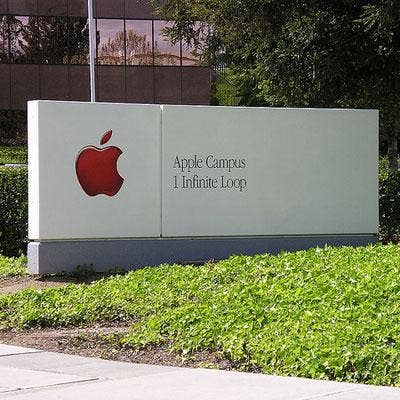
What are the premium market share gains versus Apple and what is driving those HP gains?
I think premium is just an example of segmenting the market, segmenting it again and segmenting it again and finding the pockets of profitable growth. Growth just for growth's sake, I have always said, is a pyrrhic victory. It is uninteresting.
Premium is a great way to represent our brand. It is compelling for our customers. We are playing our game. There will be other pockets of growth that we go after. And when we do it we are going to put a lot of wood behind fewer arrows and do it better than anybody else on the planet.